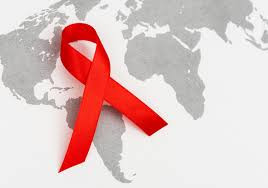
THE protection and promotion of child rights in Zimbabwe remain a subject of intense debate among policy-makers, legal scholars and civil society.
As Zimbabwe seeks to align itself with global standards and commitments, notably the United Nations Convention on the Rights of the Child (UNCRC), the effectiveness of its domestic policies and legal frameworks is under scrutiny.
This article critically examines the definition of a child within Zimbabwean law, evaluates the effectiveness of child rights and policies, and highlights areas requiring urgent reform.
Defining a child: Statutory and legal perspectives
Zimbabwean law provides several definitions of who constitutes a child, depending on the context.
The Constitution of Zimbabwe Amendment (No 20) Act, 2013, under section 81(1), defines a child as “every boy and girl under the age of 18 years.”
This statutory definition aligns with Article 1 of the UNCRC, which similarly defines a child as “every human being below the age of 18 years unless under the law applicable to the child, majority is attained earlier.”
Other statutory instruments reinforce this definition.
- Mavhunga puts DeMbare into Chibuku quarterfinals
- Bulls to charge into Zimbabwe gold stocks
- Ndiraya concerned as goals dry up
- Letters: How solar power is transforming African farms
Keep Reading
The Children’s Act [Chapter 5:06] section 2, for example, defines a child as “any person who is under the age of 16 years”, but also provides for the broader definition of a “young person” as someone under the age of eighteen.
This discrepancy sometimes leads to challenges in enforcement and policy coherence.
Nevertheless, both the Constitution and international instruments ratified by Zimbabwe emphasise the 18-year benchmark, ensuring that the country’s legal framework is broadly in line with global standards.
Child rights under the Constitution of Zimbabwe
The 2013 Constitution marked a significant shift in the protection of child rights, particularly through section 81, which enshrines comprehensive entitlements for children. These include:
- The right to a name and family
- The right to be protected from economic and sexual exploitation, abuse, or any form of violence.
- The right to education, health care,and shelter.
- The right not to be detained except as a measure of last resort.
Importantly, the Constitution mandates that the “best interests of the child are paramount in every matter concerning the child.”
This principle, echoing Article 3 of the UNCRC, has been cited in several judicial decisions, including Dzvova v Minister of Education, Sports and Culture (SC 113/2007), where the Supreme Court upheld the right of a child to freedom from discrimination in the education system.
Evaluating the effectiveness of child rights policies
Despite a robust legal framework, the effectiveness of child rights policies in Zimbabwe is mixed.
On one hand, progressive laws and constitutional guarantees have improved the formal protection of children.
The establishment of the Zimbabwe Child Rights Coalition and various government initiatives, such as the Basic Education Assistance Module, illustrate efforts to address key areas like access to education and social welfare.
However, several challenges persist.
Implementation gaps: While the law is clear, enforcement remains inconsistent. For example, child marriages, though outlawed by the Constitutional Court in Mudzuru & Another v Minister of Justice, Legal and Parliamentary Affairs (CCZ 12/2015), continue in some communities due to socio-cultural practices and lack of effective monitoring.
Resource constraints: Economic difficulties have hampered government’s capacity to provide adequate health, education and protection services.
Many children, especially in rural areas, lack access to quality schooling and healthcare, undermining the constitutional promise of equal opportunities.
Child labour and abuse: Reports of child labour, trafficking and abuse remain worryingly prevalent.
The legal system, while providing avenues for redress, often fails to deliver timely justice due to backlogs, lack of child-friendly procedures, and insufficient awareness among children and guardians of their rights.
Progress and opportunities for reform
Civil society organisations play a crucial role in bridging the gap between legal guarantees and practical realities.
Awareness campaigns, legal aid and community-based child protection committees have yielded positive results in some districts.
Moreover, government’s recent efforts to harmonise statutory laws with the Constitution — such as amendments to the Marriages Act to prohibit child marriages — signal a willingness to confront entrenched challenges.
- Looking ahead, the effectiveness of child rights and policies will depend on:
- Enhanced training for law enforcement, judicial officers and social workers on child rights.
- Increased budgetary support for child welfare programmes
- Strengthening community-based mechanisms for reporting and responding to violations.
- Continued alignment of domestic laws with international standards.
Zimbabwe’s legal and policy framework for the protection of child rights is, on paper, among the most progressive in the region.
However, significant gaps remain between policy and practice.
For Zimbabwe to fulfil its constitutional and international obligations, a concerted effort is needed from government, civil society and communities to ensure that every child enjoys not just the rights enshrined in law, but also the reality of a safe, nurturing and empowering environment.
As Zimbabweans, our commitment to the next generation must go beyond rhetoric and legal texts — it must be demonstrated in action and unwavering support for the rights and well-being of every child.










